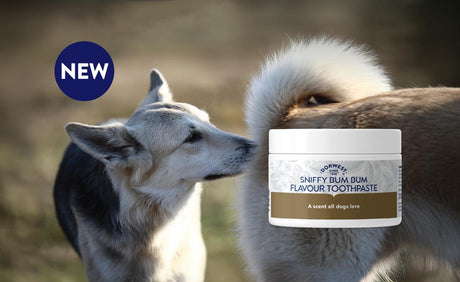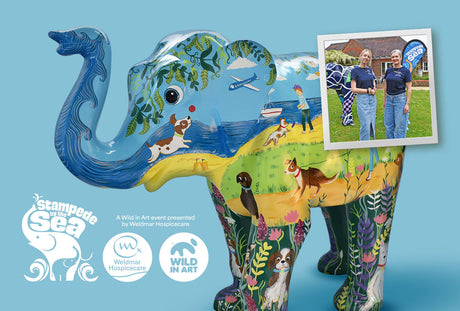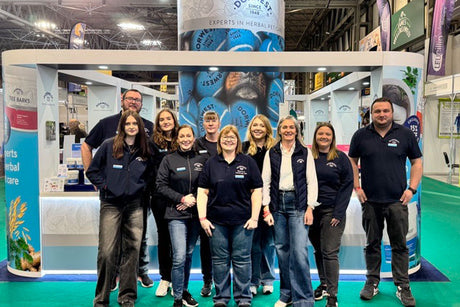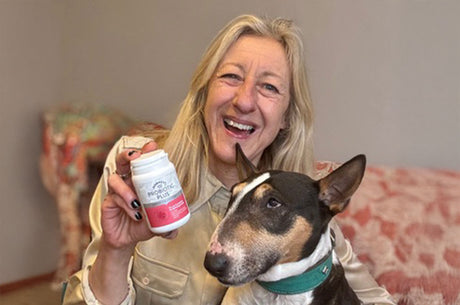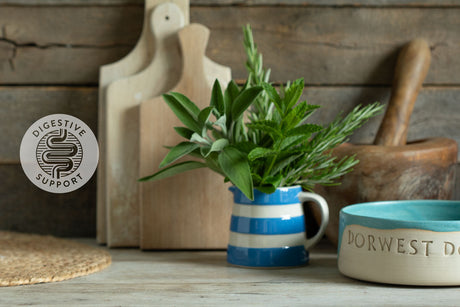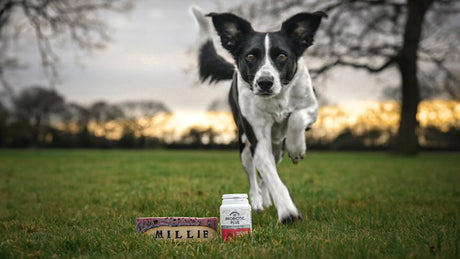Here is some brilliant information on toxins found in the garden at Springtime........
Gardening season is here! Plant bulbs are just as excited to break through the ground to add some color to our yards as we are to see some greenery! That said, we need to be aware of the potential dangers spring plants can be for our pets. Here is a list of some of the most common spring plants and their toxicities… so you know how to pet-proof your garden and keep your pet safe!
Tulips and Hyacinth
 Tulips contain allergenic lactones while hyacinths contain similar alkaloids. The toxic principle of these plants is very concentrated in the bulbs (versus the leaf or flower), so make sure your dog isn’t digging up the bulbs in the garden. When the plant parts or bulbs are chewed or ingested, it can result in tissue irritation to the mouth and esophagus. Typical signs include profuse drooling, vomiting, or even diarrhea, depending on the amount consumed. There’s no specific antidote, but with supportive care from the veterinarian (including rinsing the mouth, anti-vomiting medication, and possibly subcutaneous fluids), animals do quite well. With large ingestions of the bulb, more severe symptoms such as an increase in heart rate and changes in respiration can be seen, and should be treated by a veterinarian.
Tulips contain allergenic lactones while hyacinths contain similar alkaloids. The toxic principle of these plants is very concentrated in the bulbs (versus the leaf or flower), so make sure your dog isn’t digging up the bulbs in the garden. When the plant parts or bulbs are chewed or ingested, it can result in tissue irritation to the mouth and esophagus. Typical signs include profuse drooling, vomiting, or even diarrhea, depending on the amount consumed. There’s no specific antidote, but with supportive care from the veterinarian (including rinsing the mouth, anti-vomiting medication, and possibly subcutaneous fluids), animals do quite well. With large ingestions of the bulb, more severe symptoms such as an increase in heart rate and changes in respiration can be seen, and should be treated by a veterinarian.
Daffodils
 These flowers contain lycorine, an alkaloid with strong emetic properties (something that triggers vomiting). Ingestion of the bulb, plant or flower can cause severe vomiting, diarrhea, abdominal pain, and even possible cardiac arrhythmias or respiratory depression. Crystals are found in the outer layer of the bulbs, similar to hyacinths, which cause severe tissue irritation and secondary drooling. Daffodil ingestions can result in more severe symptoms so if an exposure is witnessed or symptoms are seen, we recommend seeking veterinary care.
These flowers contain lycorine, an alkaloid with strong emetic properties (something that triggers vomiting). Ingestion of the bulb, plant or flower can cause severe vomiting, diarrhea, abdominal pain, and even possible cardiac arrhythmias or respiratory depression. Crystals are found in the outer layer of the bulbs, similar to hyacinths, which cause severe tissue irritation and secondary drooling. Daffodil ingestions can result in more severe symptoms so if an exposure is witnessed or symptoms are seen, we recommend seeking veterinary care.
Lilies
 There are dangerous and benign lilies out there, and it’s important to know the difference. Peace, Peruvian, and Calla lilies contain oxalate crystals that cause minor signs, such as tissue irritation to the mouth, tongue, pharynx, and esophagus – this results in minor drooling. The more dangerous, potentially fatal lilies are true lilies, and these include Tiger, Day, Asiatic, Easter and Japanese Show lilies – all of which are highly toxic to cats! Even small ingestions (such as 2-3 petals or leaves) can result in severe kidney failure. If your cat is seen consuming any part of a lily, bring your cat (and the plant) immediately to a veterinarian for medical care. The sooner you bring in your cat, the better and more efficiently we can treat the poisoning. Decontamination (like inducing vomiting and giving binders like activated charcoal) are imperative in the early toxic stage, while aggressive intravenous fluid therapy, kidney function monitoring tests, and supportive care can greatly improve the prognosis.
There are dangerous and benign lilies out there, and it’s important to know the difference. Peace, Peruvian, and Calla lilies contain oxalate crystals that cause minor signs, such as tissue irritation to the mouth, tongue, pharynx, and esophagus – this results in minor drooling. The more dangerous, potentially fatal lilies are true lilies, and these include Tiger, Day, Asiatic, Easter and Japanese Show lilies – all of which are highly toxic to cats! Even small ingestions (such as 2-3 petals or leaves) can result in severe kidney failure. If your cat is seen consuming any part of a lily, bring your cat (and the plant) immediately to a veterinarian for medical care. The sooner you bring in your cat, the better and more efficiently we can treat the poisoning. Decontamination (like inducing vomiting and giving binders like activated charcoal) are imperative in the early toxic stage, while aggressive intravenous fluid therapy, kidney function monitoring tests, and supportive care can greatly improve the prognosis.
Crocus
 There are two Crocus plants: one that blooms in the spring (Crocus species) and the other in the autumn (Colchicum autumnale). The spring plants are more common and are part of the Iridaceae family. These ingestions can cause general gastrointestinal upset including vomiting and diarrhea. These should not be mistaken for Autumn Crocus, part of the Liliaceae family, which contain colchicine. The Autumn Crocus is highly toxic and can cause severe vomiting, gastrointestinal bleeding, liver and kidney damage, and respiratory failure. If you’re not sure what plant it is, bring your pet to their veterinarian immediately for care. Signs may be seen immediately but can be delayed for days.
There are two Crocus plants: one that blooms in the spring (Crocus species) and the other in the autumn (Colchicum autumnale). The spring plants are more common and are part of the Iridaceae family. These ingestions can cause general gastrointestinal upset including vomiting and diarrhea. These should not be mistaken for Autumn Crocus, part of the Liliaceae family, which contain colchicine. The Autumn Crocus is highly toxic and can cause severe vomiting, gastrointestinal bleeding, liver and kidney damage, and respiratory failure. If you’re not sure what plant it is, bring your pet to their veterinarian immediately for care. Signs may be seen immediately but can be delayed for days.
Lily of the Valley
 The Convallaria majalis plant contains cardiac glycosides which will cause symptoms similar to digitalis (foxglove) ingestion. These symptoms include vomiting, diarrhea, a drop in heart rate, severe cardiac arrhythmias, and possibly seizures. Pets with any known exposure to this plant should be examined and evaluated by a veterinarian and treated symptomatically.
The Convallaria majalis plant contains cardiac glycosides which will cause symptoms similar to digitalis (foxglove) ingestion. These symptoms include vomiting, diarrhea, a drop in heart rate, severe cardiac arrhythmias, and possibly seizures. Pets with any known exposure to this plant should be examined and evaluated by a veterinarian and treated symptomatically.
In addition…Fertiliers
As we gardeners work on our rose garden, be aware of those fertilizers. While most are not very toxic (resulting in minor gastrointestinal irritation when consumed), some fertilizers can be fatal without treatment. Here are a few ingredients to be aware of so you know what toxins and symptoms to watch out for.
-
Blood meal – This is dried, ground, and flash-frozen blood and contains 12% nitrogen. While it’s a great organic fertilizer, if ingested, it can cause vomiting (of some other poor animal’s blood) and diarrhea. More importantly, it can result in severe pancreatitis, which is inflammation of the pancreas. Some types of blood meal are also fortified with iron, resulting in iron toxicity, so make sure to know what’s in your bag of blood!
Bone Meal – This is made up of defatted, dried, and flash-frozen animal bones that are ground to a powder. This “bone” is also what makes it so palatable to your dog, so make sure to keep your pet from digging in it and ingesting the soil. While this also makes a great organic fertilizer, it can become a problem when consumed as the bone meal forms a large cement-like bone ball in the stomach – which can cause an obstruction in the gastrointestinal tract – resulting in possible surgery to remove it! - Rose and plant fertilizers – Some of these fertilizers contain disulfoton or other types of organophosphates (OP). As little as 1 teaspoon of 1% disulfoton can kill a 55 lb dog, so be careful! Organophosphates, while less commonly used, can result in severe symptoms [including SLUD signs (which abbreviate for salivation, lacrimation, urination, and defecation), seizures, difficulty breathing, hyperthermia, etc. In some cases, it can be fatal!
- Pesticides/Insecticides – Most pesticides or insecticides (typically those that come in a spray can) are basic irritants to the pet and are usually not a huge concern unless a pet’s symptoms become persistent. Some may contain an organophosphate which can be life threatening when consumed in large quantities. It is always best to speak to a trained medical professional if there are any questions.
- Iron – This is commonly added to fertilizers, and can result in iron toxicity (from ingestion of elemental iron). This is different from “total” iron ingestion, and can be confusing to differentiate. When in doubt, have a medical professional at Pet Poison Helpline assist you with finding out if the amount ingested was toxic or not. Large ingestions can result in vomiting, bloody diarrohea, and potential cardiac and liver effects.
The best thing any pet owner can do is to be educated on the household toxins (both inside the house and out in the garden!) – that way you make sure how to pet proof your house appropriately. Make sure to keep all these products in labeled, tightly-sealed containers out of your pet’s reach. Any worries please contact your vets or the Vet Poison Information Service
Taken from the American site www.vetpoisonhelpline.com
